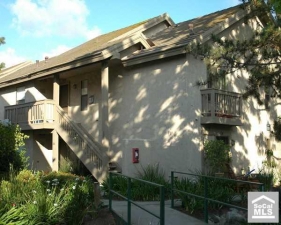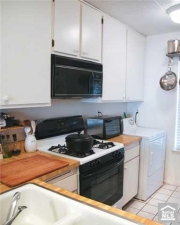I hope you are enjoying your Halloween weekend.


Irvine Home Address … 325 TANGELO 324 Irvine, CA 92618
Resale Home Price …… $208,800
Back in black
I hit the sack
I've been too long I'm glad to be back
Yes, I'm let loose
From the noose
That's kept me hanging about
AC/DC — Back in Black
Writer's Corner
I've been feeling energized lately. Everything is going very well personally and professionaly, and i am very excited about the new venture. After two or three years of the red-ink recession, I am back in the black. It's not just financial, its feeling useful, needed, and productive again. Long periods of professional inactivity dulls the mind and the senses. That's a hidden toll the recession exacts on people, even those who don't experience the full brunt of unemployment.
I have been reluctant to write much about the new venture. There are some business secrets I have an obligation to keep. I have been obtaining very good margins, but I don't want to broadcast it too loudly and bring in competitors. The blog has a loud voice at times.
I will start writing some posts about these Las Vegas properties, but I need to think through what I should and should not reveal as my greater duty is to the interests of my investors. If i spent a week documenting the details of each of the seven properties I have purchased, I would likely see a number of new competitors show up at the auction site. There is a balance, and I will find it.
Las Vegas
Las Vegas is an interesting town to travel to for business. Since I am there when the tourists are not, the rooms are much cheaper, and all the activities are less expensive and less crowded.
I have my own barometer of the financial health of Las Vegas. I am still driving to Las Vegas each week. As I go through Victorville and reach the edge of civilization before heading across the high desert, there is a Motel 6. Lately, the rate has been $44.95 per night on Sunday when I drive past. I have been staying at the Sahara for $30 per night. There are often rooms available for less than $20 per night in Las Vegas. When the Motel 6 on the fringe charges more than a big casino hotel on Las Vegas Boulevard, times are tough in Las Vegas. Maybe I am wrong, and perhaps fringe motel rooms always carry a premiium, but the Las Vegas casino hotel is a billion times more fun and interesting.
When I go out in Las Vegas (I like to throw dice), it still feels alive and vibrant. Fremont street is often packed with people, and the strip casinos have a lot of activity. The problem with Las Vegas isn't a decline in the traffic of people (there has been some of that too). The problem is that visitors are not losing or spending as much money as they used to. And while about 50% of the construction industry remains unemployed, those idle workers are not earning money and contributing to the economy. The lack of a viable housing market and its associated labor market is what makes this recession go on and on.
I have always liked Las Vegas for a variety of reasons. And going there every week is a responsibility I enjoy.
Housing Crash News
Share This | Subscribe (Free) | Mobile | RSS | Twitter | Mail news links to p@patrick.net
Patrick.net is the top search result for "housing crash" with more than 20,000 daily readers
Fri Oct 29 2010
Foreclosure activity up across most US metro areas (mynorthwest.com)
Foreclosure Crisis Is Spreading, New Data Show (npr.org)
Treasury Links Foreclosure Ills to Better Housing Prices (nytimes.com)
TARP Watchdog Makes Chilling Comment About Foreclosure-Gate (businessinsider.com)
New House Sales Stuck at Rock-Bottom (blogs.wsj.com)
'How To Forge A Client's Signature' And Other Lessons From Ameriquest (dailybail.com)
"Straight Talk" with Economic Bloggers (Mish)
Signs Hyperinflation Is Arriving (gonzalolira.blogspot.com)
2010 Contraction Now Crushing Consumers More Than Great Recession (businessinsider.com)
In Spain, Houses Are Taken but Debt Remains (nytimes.com)
GOP leader calls for weaning housing market from government support (scrippsnews.com)
New Theory on Evolution of Poltical Beliefs (miller-mccune.com)
The Robin Hood Tax (robinhoodtax.org)
Bill Gates, Sr, Promotes 'Robin Hood' Tax On WA Wealthy (huffingtonpost.com)
Portrait emerges of woman whose mummified body was found in realtor's car (latimes.com)
Thu Oct 28 2010
Scholar says lower housing prices are here to stay (lvrj.com)
Low household formations translate to high vacancy rates (firsttuesdayjournal.com)
Bernanke's Failed CNBC Predictions From 2005-07 (dailybail.com)
Bill Gross' calls QE Policy History's Most "Brazen Ponzi Scheme" (Mish)
Fed zombies hungry for quantitative easing (marketwatch.com)
Treasury: Foreclosure woes not systemic threat (financialpost.com)
Irwindale officials spent lavishly during trips to discuss housing for poor (latimesblogs.latimes.com)
Economy is running out of gas (marketwatch.com)
How Much Does It Cost the Government To Prevent a Foreclosure? (theatlantic.com)
Mortgage Mess Could Hit Banks, Housing (sandiegoreader.com)
The real foreclosure mess: Lack of accountability for banks (washingtonpost.com)
Mortgage scandal boosts investors' campaign to get banks to buy back securities (washingtonpost.com)
Elite group organizing campain to recover mortgage bond losses (blogs.wsj.com)
Mortgage Fraud and Foreclosure Fraud: The Perfect No-Prosecution Crime (usawatchdog.com)
Wall Street banks seeking to hide risks (bloomberg.com)
The real danger: another stealth bailout of the big banks (washingtonsblog.com)
Most Americans worry about ability to pay mortgage or rent (washingtonpost.com)
Val Kilmer slashes price of New Mexico ranch by $10 million (sfgate.com)
Thank You Damon S. ($20) for your kind donation.
Wed Oct 27 2010
Mortgage Bankers Push Housing Recovery to uh, 2012 (blogs.wsj.com)
Housing Cliffdives (hard to see that last data point, so small…) (dailybail.com)
US stocks down after weak housing report (economictimes.indiatimes.com)
US house prices dip again in August (bbc.co.uk)
House prices fell in August, near lows (finance.yahoo.com)
San Diego's slight house price rise stalls in August (signonsandiego.com)
Beach house from list at $2,900,000 to selling for $900,000 (doctorhousingbubble.com)
LA houses advertised in China (shanghai.craigslist.com.cn)
Australian housing hurtles toward disaster (smh.domain.com.au)
Real House Prices, Price-to-Rent Ratio (calculatedriskblog.com)
With foreclosures crisis, banks undermine faith in markets (money.cnn.com)
US should remove top bank execs over foreclosure mess (voices.washingtonpost.com)
Mortgages to Drop Below $1 Trillion in 2011 to Least Since 1996 (bloomberg.com)
Even The Super-Rich Prefer Renting To Buying In This Market (businessinsider.com)
Top Incomes Grew Five-Fold in 2009 to an Average of $519 Million (dailyfinance.com)
Number of Californians entering foreclosure rises 19% (latimes.com)
How Long Does Foreclosure Take? (npr.org)
Judge Judy: Before the Mortgage Crisis (youtube.com)
End Social Security And Medicare Now! (patrick.net)
Thank You Jaime L. ($10) for your kind donation.
Tue Oct 26 2010
Plans to cut the federal budget deficit could affect mortgage debt subsidies (articles.latimes.com)
Housing and banking lobbies will kill any attempt to free citizens from debt (marketwatch.com)
Existing House Inventory increases 8.9% Year-over-Year (calculatedriskblog.com)
99 Weeks: When Unemployment Benefits Run Out (cbsnews.com)
The Real Unemployment Rate Is 17% (realclearpolitics.com)
226,000 could lose jobless benefits (economy.ocregister.com)
Backdoor Foreclosure Via Insurance (mindonmoney.wordpress.com)
Liquidity Traps, Falling Velocity, Commodity Hoarding, and Bernanke's Misguided Tinkering (Mish)
Why the Fed's 'Trickle-Down Economics' Is Failing (dailyfinance.com)
Fed is dumpster for banks' smallpox-blanket-grade mortgage bonds (kunstler.com)
What is a currency war, and how do you win one? (slate.com)
US banking regulators in new foreclosures probe (bbc.co.uk)
Banks can't even manage to act in their own interest (nytimes.com)
Commercial Property Prices in U.S. Decline to Eight-Year Low (bloomberg.com)
Global house prices (economist.com)
A $10 million house in bubble days is now a $5 million house (reuters.com)
Unemployment Misery, Lower Earnings For All But Super Wealthy (huffingtonpost.com)
One rich guy who wants to pay higher taxes: Bill Gates Sr. (mcclatchydc.com)
Mukesh Ambani: India billionaire's house in Mumbai (latimes.com)
Housing Cartoons (Last one best) (ritholtz.com)
Mon Oct 25 2010
Interview with Gary Shilling: housing to fall 20% more (cnbc.com)
Sudden and Dramatic Drop in U.S. House Prices: 5.9% price drop in 2 months (clearcapital.com)
Unmentioned Elephant In Foreclosure Fraud Room: Second Liens (blogs.alternet.org)
Foreclosure crisis is about who gets stuck with $1.1 trillion in losses (businessweek.com)
We'd like to return these bad loans, please (money.cnn.com)
To fix the economy, let bad banks die (latimes.com)
FDIC Called On To Put Bank Of America Into Receivership (commondreams.org)
Mortgage interest deduction subsidizes wealthy at expense of middle class (mybudget360.com)
Reduction in debt subsidies could be in houseowners' futures (contracostatimes.com)
California unemployment: Government job losses (latimes.com)
Housing Calculator Guy Apologizes For Lack Of Negative Numbers (npr.org)
Dubai: Real Estate Crash Sends Prices, Rents Falling (news.yahoo.com)
Apartments are a good investment for some (usatoday.com)
Demand Rising for Rentals Among the Ultrarich (nytimes.com)
Income Inequality Linked to Senate Standoffs (miller-mccune.com)
Health Care and the Campaign (nytimes.com)
Was Fraud the Business Model for the Entire Mortgage Industry? (washingtonsblog.com)
Inside Job (film) (en.wikipedia.org)
Banks defeat regulation (salon.com)
Mobile Homes from Cullman Liquidation (honesty in advertising) (biggeekdad.com)
Four gets you one hundred and fifty
If you manage to time the real estate cycle in California, the return on investment can be enormous. All the speculators who used 100% financing and either HELOCed or sold at the peak obtained an infinite return because their investment was zero. But even the FHA buyers who put 3% down obtained returns on their investment that in many cases is measured in triple digits. The owner of today's featured property invested $4,500 when he purchased, and when he refinanced at the peak, he sold it to the bank (in a nefarious way) and made $169,500. That is approximately 38 times what he invested. The bank is left holding a $262,500 mortgage on a tiny old condo worth about $200,000 in today's still-inflated market.


Irvine Home Address … 325 TANGELO 324 Irvine, CA 92618 ![]()
Resale Home Price … $208,800
Home Purchase Price … $97,500
Home Purchase Date …. 3/10/1999
Net Gain (Loss) ………. $98,772
Percent Change ………. 101.3%
Annual Appreciation … 6.6%
Cost of Ownership
————————————————-
$208,800 ………. Asking Price
$7,308 ………. 3.5% Down FHA Financing
4.23% …………… Mortgage Interest Rate
$201,492 ………. 30-Year Mortgage
$39,525 ………. Income Requirement
$0,989 ………. Monthly Mortgage Payment
$181 ………. Property Tax
$0 ………. Special Taxes and Levies (Mello Roos)
$17 ………. Homeowners Insurance
$250 ………. Homeowners Association Fees
============================================
$1,437 ………. Monthly Cash Outlays
-$89 ………. Tax Savings (% of Interest and Property Tax)
-$279 ………. Equity Hidden in Payment
$11 ………. Lost Income to Down Payment (net of taxes)
$26 ………. Maintenance and Replacement Reserves
============================================
$1,107 ………. Monthly Cost of Ownership
Cash Acquisition Demands
——————————————————————————
$2,088 ………. Furnishing and Move In @1%
$2,088 ………. Closing Costs @1%
$2,015 ………… Interest Points @1% of Loan
$7,308 ………. Down Payment
============================================
$13,499 ………. Total Cash Costs
$16,900 ………… Emergency Cash Reserves
============================================
$30,399 ………. Total Savings Needed
Property Details for 325 TANGELO 324 Irvine, CA 92618
——————————————————————————
Beds: 1
Baths: 1 bath
Home size: 819 sq ft
($255 / sq ft)
Lot Size: n/a
Year Built: 1979
Days on Market: 218
Listing Updated: 40362
MLS Number: S611090
Property Type: Condominium, Residential
Community: Orangetree
Tract: Othr
——————————————————————————
According to the listing agent, this listing may be a pre-foreclosure or short sale.
Looking for Investor or solid owner occupant transaction to stay the course with the short sale process.
Good luck with that.
I find that the cumbersome nature of the short sale process makes is easier for flippers to sell houses. Buyers don't have the patience to wait forever for a short sale. There are many buyers who have offers on several short sales, and they sit and wait for one of them to pop. When a filpper puts a property on the market, it gets attention because a prospective buyer does not have to wait for a bank to make up its mind. Both short sales and REO are bank decisions. Third party trustee flips pair serious sellers and impatient buyers. If the property is priced right, it quickens the pace of sales significantly.








.jpg)



































